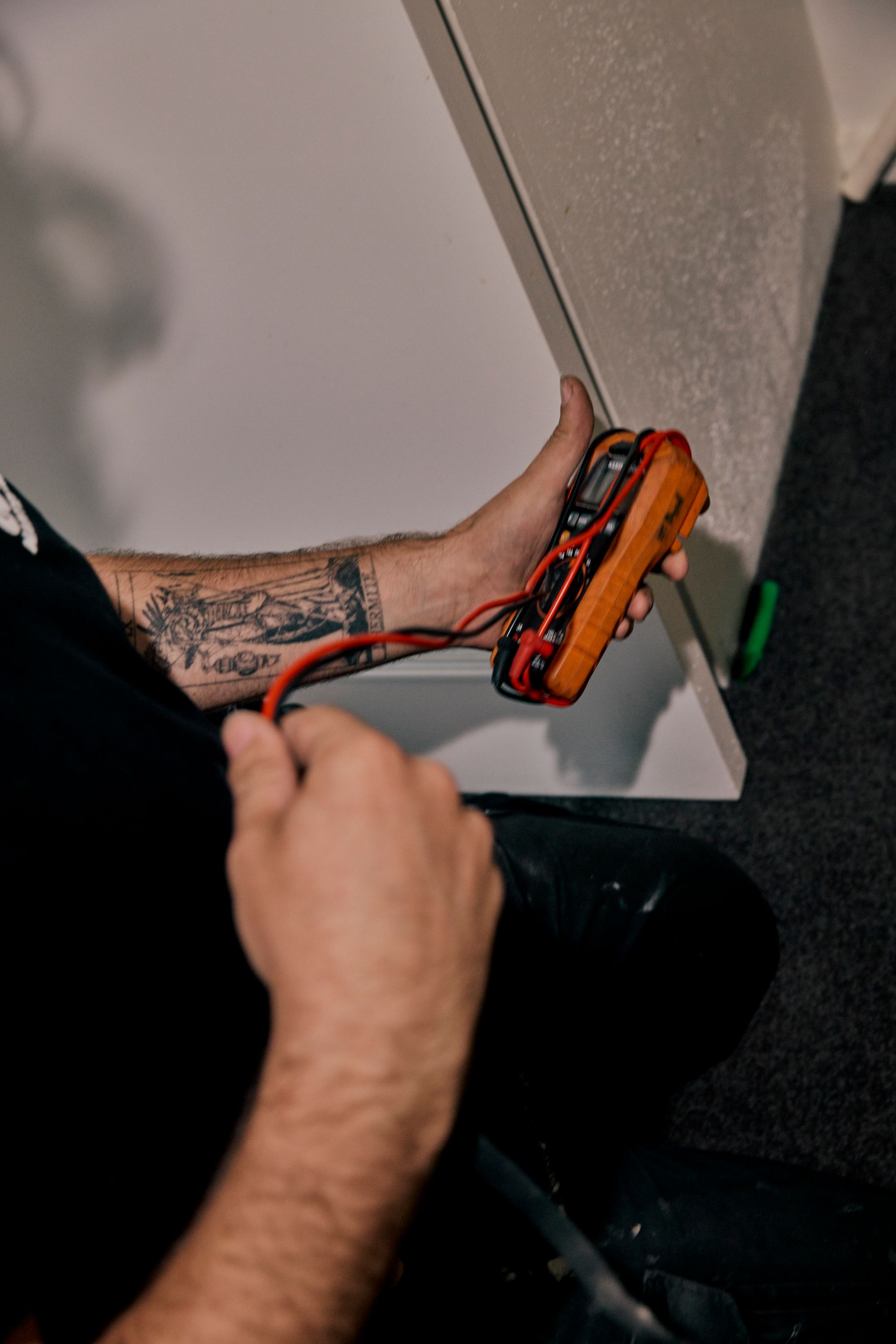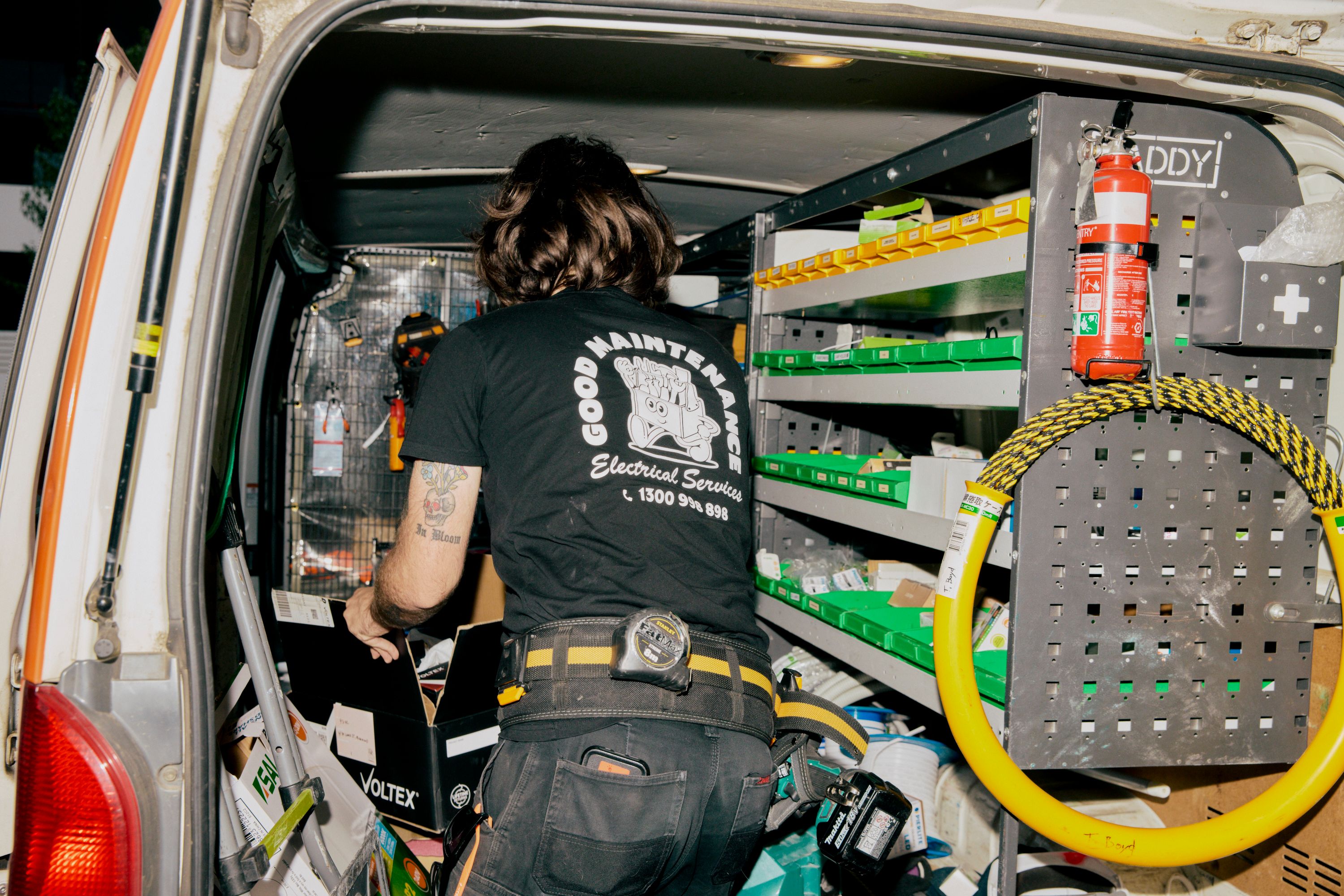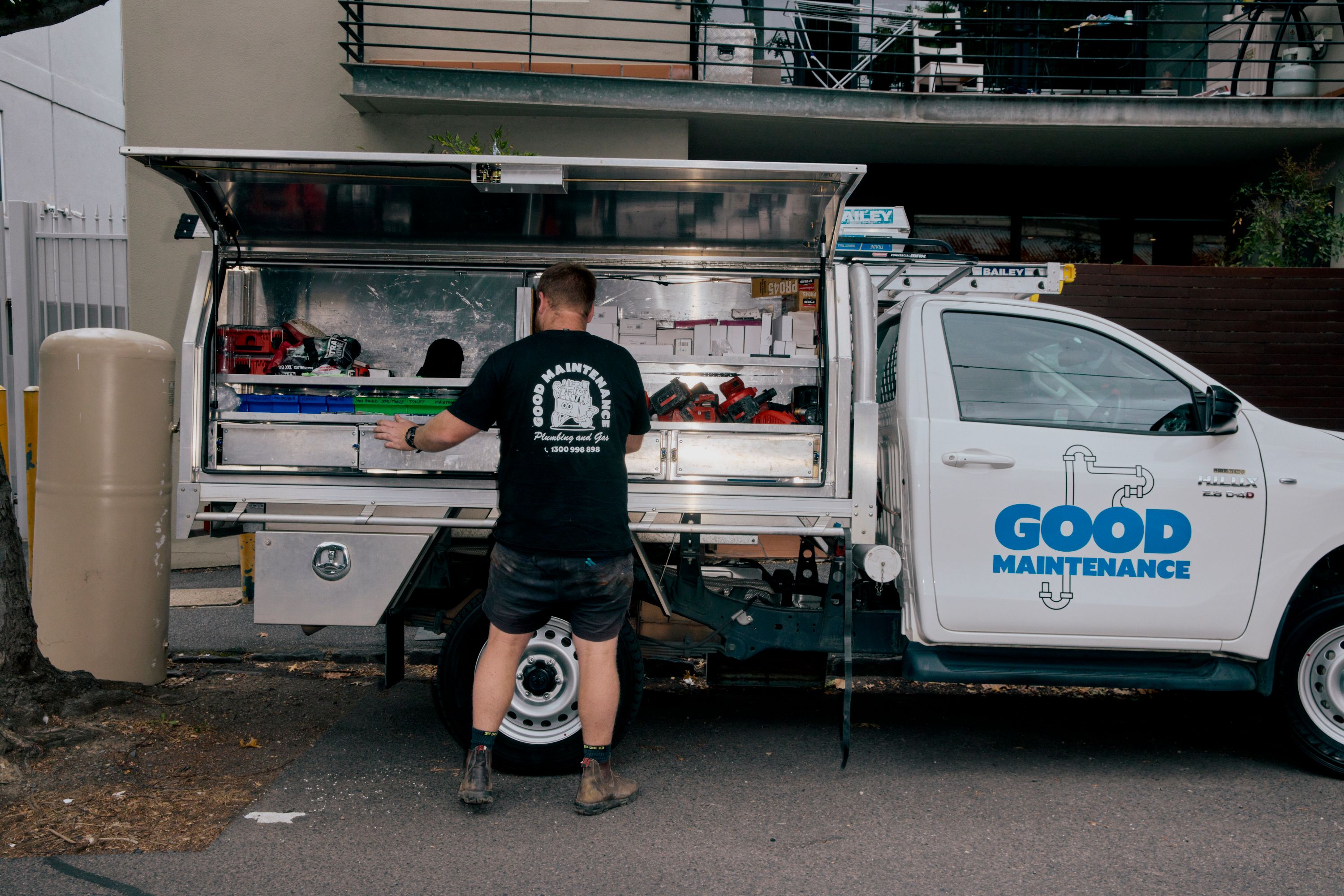Urgent Electrical Hazards You Can't Ignore
If it's making noise, something's gone wrong.

When you notice that unmistakable burning, acrid, chemical smell of overheating electrical components, plastic melting, wire insulation breaking down, or connections literally cooking themselves, alarm bells should sound.
If you notice it, especially near outlets, switch plates, or coming from inside walls, you're smelling the early stages of an electrical fire. The materials in your walls are reaching dangerous temperatures, and you might have minutes or hours before flames actually appear. Turn off the power to that area immediately and call a trusty Good Maintenance electrician.
Your electrical system should be the strong, silent type
If it's making noise, something's gone wrong. Buzzing, crackling, or sizzling sounds from outlets, switches, or your electrical panel are the sounds of electricity arcing.
Think of arcing like a short circuit that's trying to complete itself through the air. It generates tremendous heat in a very small space, easily hot enough to ignite nearby materials. These loose connections often happen gradually as houses settle, screws work loose, or connections corrode over time.
The visual red flags
Sometimes, electrical problems are kind enough to show themselves. Sparks when you plug something in, scorch marks around outlets, or outlets that feel warm to the touch. Frequently tripping circuit breakers deserve special attention as they're not just being temperamental.
Circuit breakers are designed to trip when there's too much current flowing through a circuit. If yours keeps tripping, it means your system is repeatedly trying to prevent an overload situation that could cause a fire. Maybe you're asking too much of an old circuit, or maybe there's a dangerous fault somewhere in the line. Either way, it's not something you can fix by just flipping the breaker back on.
Flickering lights might seem harmless, but they often indicate loose connections in your electrical system. When connections aren't tight, resistance increases, generating heat and creating fire risks. It's especially concerning if multiple fixtures flicker simultaneously or if the flickering happens when large appliances kick on.
Is your home built before 1980?
If so, it was probably designed for a world with a few lights, maybe a television, and appliances that used a fraction of the power we demand today. Now we're asking these systems to handle air conditioning, multiple computers, gaming systems, electric vehicle chargers, and countless other high-powered devices.
The infrastructure simply wasn't built for this load, and the stress shows up as all those warning signs we've been discussing. Add in decades of wear, settling foundations that loosen connections, and the natural degradation of materials, and you've got a perfect storm for electrical failure.
The high stakes of electrical problems
The statistics around electrical fires are sobering. Electrical failures cause thousands of house fires annually, resulting in billions in property damage and hundreds of deaths. But the immediate fire risk is just one concern. Electrical shock injuries can cause severe burns, cardiac arrest, and neurological damage that lasts a lifetime.
Even a "minor" shock of 30 milliamps can cause you to lose muscular control, making it impossible to let go of the electrical source. Higher currents can stop your heart or cause respiratory failure. The voltage in your walls has more than enough power to kill under the right circumstances.
Why this isn't a DIY situation
The internet is full of electrical "fixes" and tutorials, but the reality is that electrical work is regulated by law for very good reasons. In Australia, doing your own electrical work is illegal and can result in serious fines or even imprisonment.
The licensed electricians at Good Maintenance spend years learning how to work with electricity safely and how to diagnose problems that aren't obvious to untrained eyes. They use specialised equipment like thermal imaging cameras to spot overheating connections before they become visible problems. They understand load calculations, safety standards, and how different components interact in ways that can create unexpected hazards.
More importantly, professional electrical work is accompanied by a Certificate of Electrical Safety (COES), a legal document that confirms the work meets safety standards. Without this certificate, you could face insurance issues if something goes wrong, and you'll definitely have problems when it comes time to sell your house.
Have you recognised any of these warning signs in your home?
The first step is immediate: don't wait. Turn off power to the affected area if you can do so safely, and contact our licensed electricians. If you smell burning or see active sparking, evacuate the area and call emergency services.
For less immediately threatening signs like frequent breaker trips or warm outlets, schedule an electrical inspection as soon as possible. Many problems that seem minor can escalate quickly, especially when the system is under stress from high-usage periods. What might cost a few hundred dollars to repair today could cost tens of thousands in fire damage tomorrow.
Related articles
Ever plug in your phone charger or kettle only to find the power point's completely dead?

Your family's safety is crucial and worth more than any perceived savings from DIY work. Learn more about your home's electrical safety requirements.

How good's electricity! But behind all that convenience lies a system that demands respect and proper maintenance.
